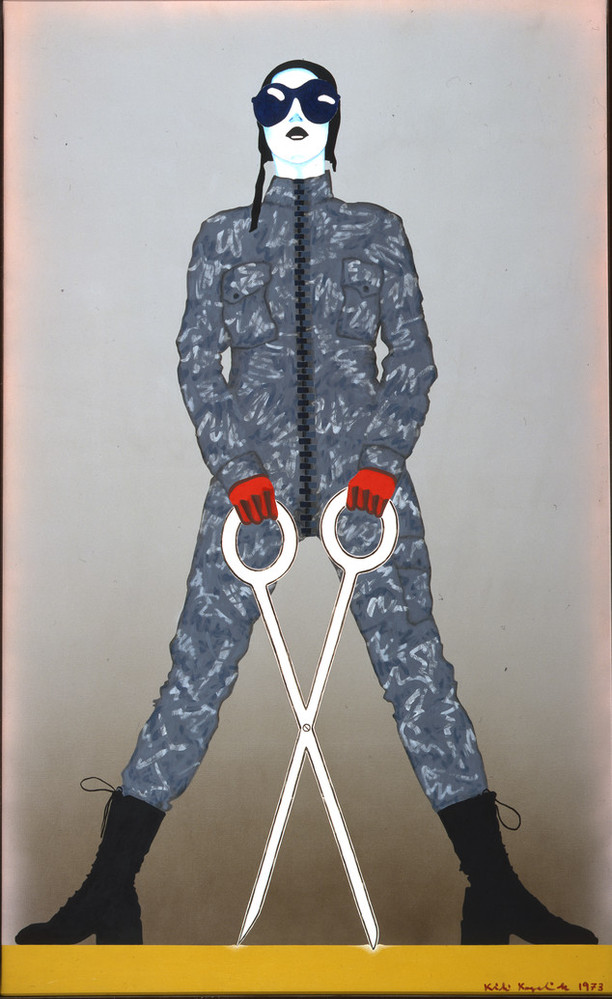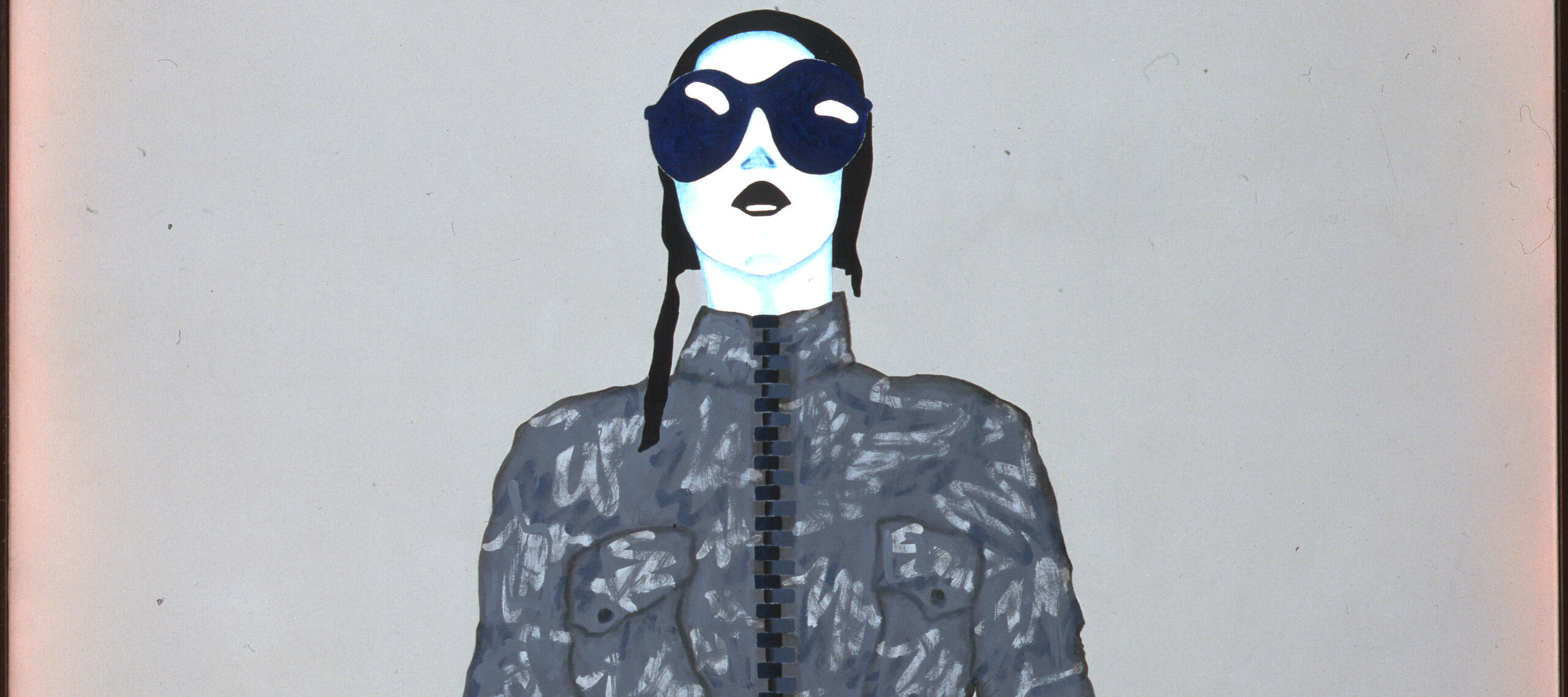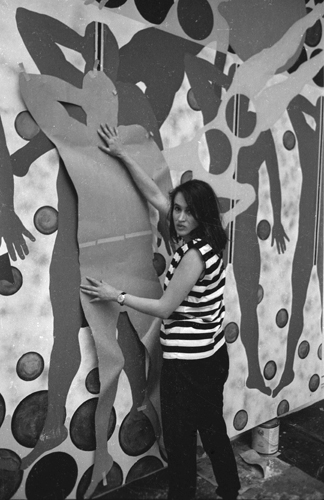Austrian-born artist Kiki Kogelnik (1935–1997) began her career as a gestural painter. It was not until 1961, when she moved from Paris, to Santa Monica, and later to New York—thereby eschewing the European abstraction and Viennese avant-garde art scenes of the time—that she developed the more Pop-inspired style for which she became best known.
In New York, she met American Pop Art giants Andy Warhol, Roy Lichtenstein, and Tom Wesselmann, all of whom helped spark Kogelnik’s fascination with new and developing technologies. Although known for her large-scale paintings, Kogelnik also dabbled in cut-out vinyl, fiberglass, glass, and print throughout her lifetime.
While Kogelnik’s work drew heavily from Pop influences, she rejected the movement’s roots in commercialism and objectification. Instead, Kogelnik chose to channel her developing feminist consciousness, offering commentary on the male-dominated art world and the use of women’s bodies in advertisement.
Superwoman (1973), part of NMWA’s collection, encapsulates Kogelnik’s trademark wit and criticism. Frustrated with the image of the hypersexualized damsel in distress presented in comic book media, she developed her own take on what a woman superhero would look like, freed from the male gaze. The harsh outline, static background, and intimidating pose embody traditional qualities of comic book art. However, the subject’s fatigues, boots, and demeanor are decidedly more androgynous than women in comics were typically afforded to be.

The piece may also be a self-portrait. Similar to the subject of the work, Kogelnik reputedly wore aviator hats and oversized sunglasses. The scissors are also a recurring symbol in Kogelnik’s work. They represent the artist’s ability to manipulate figures by “cutting” them from the fabric of the narrative. She also often created cut paper and vinyl stencils—modeled from herself or her friends—as a tool in her artistic practice. Fitting with Kogelnik’s tongue-in-cheek sense of humor, scissors could also be viewed as a reference to lesbianism—a popular topic in second wave and radical feminism.
Kogelnik’s work also frequently features machinery, which took her style another step away from conventional Pop Art. Kogelnik once said, “I’m not involved with Coca-Cola. I am involved with the technical beauty of rockets, people flying in space, and people becoming robots.” Her work often juxtaposed humanity and machinery, underscoring the fragility and unsustainability of the human form—particularly in comparison to the ceaseless evolution of technology.

